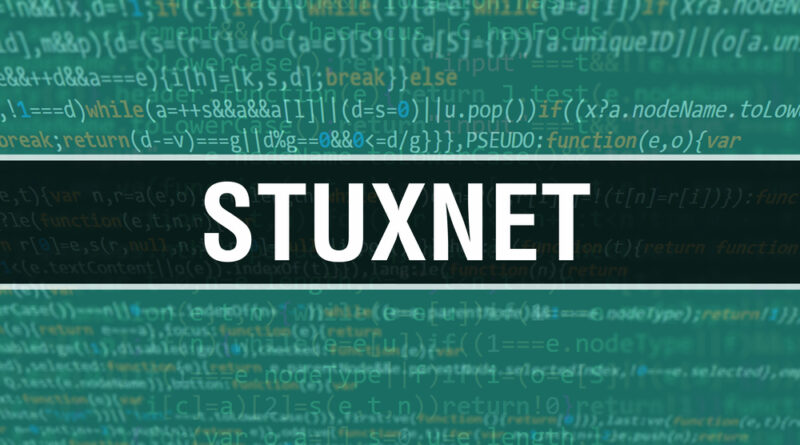The Stuxnet Operation: Technical Breakdown, Impact, and International Implications
Technical Breakdown of Stuxnet
Overview
Stuxnet, discovered in 2010, was the first malware proven to cause physical damage to industrial equipment. It infiltrated Microsoft Windows systems tied to Iran’s uranium-enrichment program, then sabotaged Siemens Step7 programmable-logic controllers (PLCs) that managed the centrifuges at the Natanz Fuel Enrichment Plant.
Infection Vectors and Propagation
| Phase | Method | Details |
|---|---|---|
| Initial insertion | Infected USB drive | Likely introduced via a contractor or employee; activated automatically through a Windows shortcut (.LNK) flaw as soon as Windows Explorer viewed the drive. |
| Early lateral spread | Network exploits | Leveraged a zero-day in the Windows Print Spooler service and the well-known MS08-067 Server Service flaw to hop across local networks. |
| Privilege escalation | Kernel exploit | Used a win32k.sys zero-day to gain SYSTEM-level access and install kernel-mode drivers. |
| Air-gap hopping | Tainted Step7 project files | Embedded itself in Siemens Step7 project files so the malware travelled with legitimate engineering files between computers—including those on isolated networks. |
| Persistence & updates | Peer-to-peer sharing | In the target environment, infected hosts traded updated payloads even without internet connectivity. |
Key Vulnerabilities Exploited
-
.LNK Shortcut Vulnerability – executed code when an icon was rendered.
-
Print Spooler Remote-Code Execution – allowed infections over a LAN.
-
Server Service Use-After-Free (MS08-067) – famed Conficker hole repurposed.
-
Win32k.sys Privilege Escalation – kernel access to load rootkit drivers.
Four zero-days in one campaign was unprecedented, signalling nation-state backing.
Target Recognition and Activation
Stuxnet ran a series of checks to ensure it was inside Natanz:
-
Verified Siemens Step7 software was present.
-
Examined PLC configuration for specific model numbers.
-
Looked for frequency-converter drives from Vacon (Finland) or Fararo Paya (Iran).
-
Confirmed cascade layout unique to the IR-1 centrifuge halls.
Only if every check passed did it deploy its sabotage payload, minimising collateral spread.
PLC Payload and Stealth Measures
Sabotage logic
-
Injected two sequences into Siemens S7-300 PLCs.
-
Periodically spun centrifuges well above safe speed, then sharply reduced RPM.
-
Repeated stress cycles generated vibrations and mechanical fatigue, cracking rotors and causing bearing failures.
PLC rootkit
-
Replaced
s7otbxdx.dll, an essential Step7 library, with a trojanised version. -
Intercepted read/write commands so operators saw normal values while malicious ladder-logic ran unseen.
-
Hid any abnormal RPM readings or code changes.
Digital signatures
-
Kernel drivers were signed with stolen Realtek and JMicron certificates, allowing them to load without warnings on Windows machines.
Kill switch
-
Contained a hardcoded expiry date (24 June 2012) after which it stopped spreading, limiting uncontrollable propagation.
Impact on Iran’s Nuclear Program
Timeline of the Attack
| Period | Events |
|---|---|
| Mid-2009 | First infections at Iranian industrial suppliers; malware piggybacks on equipment destined for Natanz. |
| Late 2009 – early 2010 | Stuxnet reaches the Natanz enrichment plant, activates its PLC payload, and begins damaging IR-1 centrifuges. |
| Early 2010 | Iran shuts down large numbers of centrifuge cascades after unexplained failures. |
| March–May 2010 | Updated Stuxnet variants re-infect several suppliers; second wave attempted. |
| June 2010 | Malware discovered by antivirus researchers after it leaks outside Iran. Global analysis begins, leading Microsoft and Siemens to release security patches. |
Physical Damage
-
About 1 000 centrifuges—roughly ten percent of Natanz’s operating machines, failed or were removed due to damage.
-
Centrifuge breakage rate far exceeded normal attrition, forcing shutdowns and inspections.
-
The sabotage caused immediate material loss (rotors, bearings) and consumed Iran’s stockpile of spare IR-1 machines.
Operational Delays
-
Short-term enrichment output dipped sharply; some cascades idled for months.
-
Western officials credited Stuxnet with delaying Iran’s program by months to a few years, buying time for sanctions and diplomacy.
-
Iran eventually replaced damaged machines and resumed production, mitigating long-term impact.
Strategic Effectiveness Assessment
Successes
-
Achieved covert physical sabotage without airstrikes.
-
Introduced confusion and mistrust within Iran’s technical ranks.
-
Provided political space for intensified negotiations.
Limitations
-
Did not halt uranium enrichment; Iran recovered and advanced centrifuge designs.
-
Exposure of the malware ended its utility and revealed techniques to adversaries.
Broader Implications for International Cyber Warfare
New Precedent
Stuxnet was the first publicly known cyber weapon to inflict physical damage on critical infrastructure. This shifted cyber operations from espionage to covert warfare.
Policy and Legal Shifts
-
The U.S. Department of Defense stated severe cyber attacks could be considered acts of war, justifying kinetic retaliation.
-
NATO’s Tallinn Manual began codifying how the laws of armed conflict apply to cyber operations.
-
Ongoing debate emerged over whether targeting civilian infrastructure violates sovereignty in peacetime.
Global Cyber-Arms Race
-
Iran rapidly expanded offensive cyber units, later linked to attacks on U.S. banks, Saudi oil companies, and regional rivals.
-
Russia, China, North Korea, and others studied Stuxnet’s techniques, leading to sophisticated malware like Duqu, Flame, BlackEnergy, and Industroyer.
-
Incidents such as Ukraine’s 2015 power-grid attack demonstrated that Stuxnet-style operations were now within reach of multiple states.
Doctrine and Deterrence
-
Militaries created dedicated cyber commands, integrating offensive tools into strategic planning.
-
Nations acknowledged that cyber capabilities could substitute for or complement kinetic strikes.
-
At the same time, countries recognised their vulnerability: releasing a cyber weapon hands the underlying exploit techniques to potential adversaries.
Conclusion
Stuxnet pushed malware into a realm where software can quietly sabotage machinery, not merely steal data. Technically, it combined multiple zero-days, stolen Certificates, and a PLC rootkit to execute precision sabotage inside an air-gapped nuclear facility. Strategically, it delayed Iran’s enrichment program and demonstrated a novel method for covert statecraft. But it also unleashed a cyber-arms race, eroded international norms, and showcased how digital tools can yield kinetic-level effects. The world now grapples with the legacy of Stuxnet: a powerful proof of concept, and a cautionary tale, of cyber warfare’s disruptive potential.
Photo Credit: DepositPhotos.com

